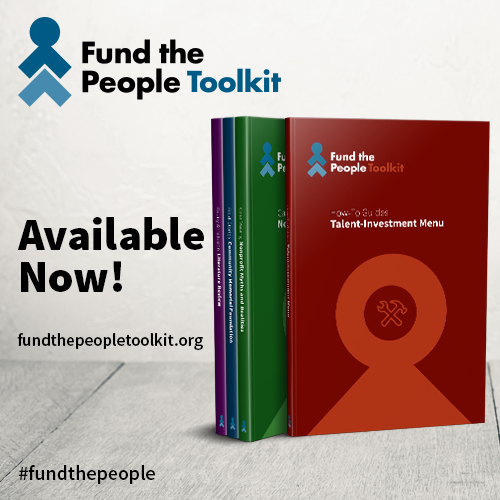This blog post was written by Fund the People, the national campaign to maximize investment in the nonprofit workforce. Launched in 2014 and headquartered in Beacon, New York, Fund the People is a project of Community Partners. Fund the People is supported by national and regional philanthropies including Annie E. Casey Foundation, Bush Foundation, David and Lucile Packard Foundation, Durfee Foundation, Ford Foundation, Kresge Foundation, Robert Sterling Clark Foundation, and W.K. Kellogg Foundation. Learn more at fundthepeople.org.
Nonprofit organizations will always need good people. And these people will always need support to successfully do their work. As a funder or grantee, how do you know which investments will make the biggest difference? And how do you move past fads, shiny objects, and other noise in the social sector to improve your efforts?
One of the most effective strategies for improving the impact and performance of nonprofit organizations is to invest in the nonprofit workforce. When you intentionally deploy resources to build the support systems that enable staff development, you’re able to advance equity, inclusion, performance, impact, and sustainability at the organizations. This improves program and services outcomes, which has benefits that extend far beyond the organization.
So where do you start?
The first step is to understand the staffing health of the grantee/organization. Some of the questions you may ask include:
- How do we invest in the nonprofit workforce?
- At what levels do we invest?
- In whom (e.g. executive staff, leadership, etc.) are we investing?
- What systems, policies, and benefits exist to support and develop nonprofit talent?
- What more can the grantee/organization accomplish with explicit support for talent development?
Once you have an understanding of the health of the organization, you can begin to consider the resources available, and the ways in which you may deploy these resources. When identifying resources, it’s important to remember they are not always financial; focus, time, and training are critical – and often overlooked.
Moving to action
Which steps to take next will differ for every funder and grantee. To help you consider the myriad of options, make the case, and develop a plan for talent investing, we created the Fund the People Toolkit. This free, online resource includes guidance, practices, and data, and is available for you to use and share with your colleagues. Additionally, if you’d like support using the toolkit, our team is available to present webinars, lunch-and-learn discussions, workshops, etc.
People are any organization’s greatest asset. Subsequently, significant investment in the people should be a key part of the strategy to increase your impact.

